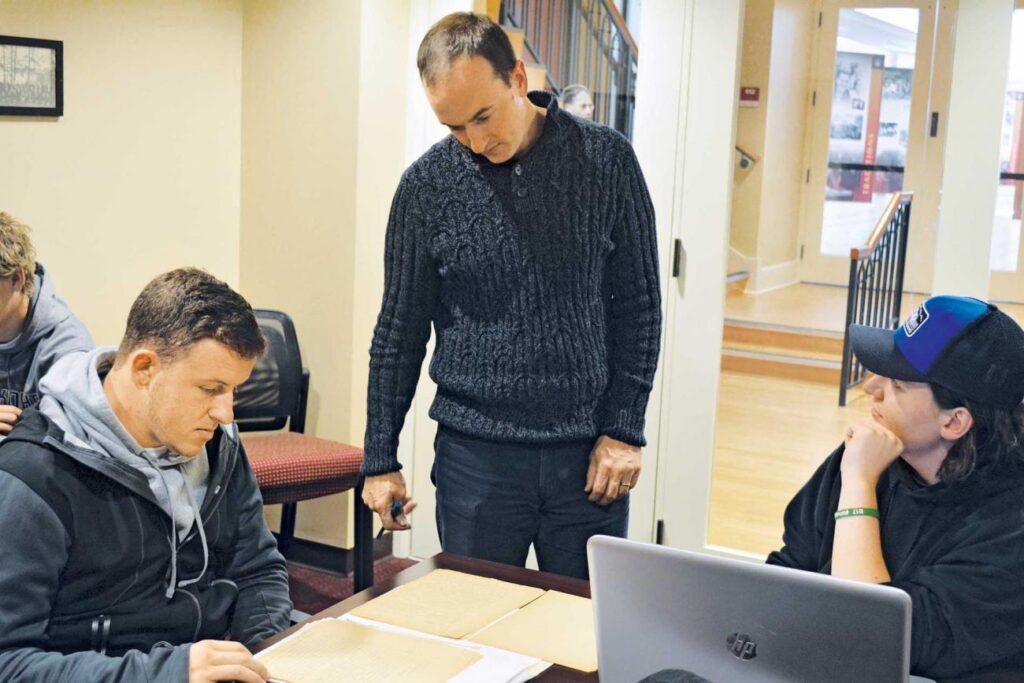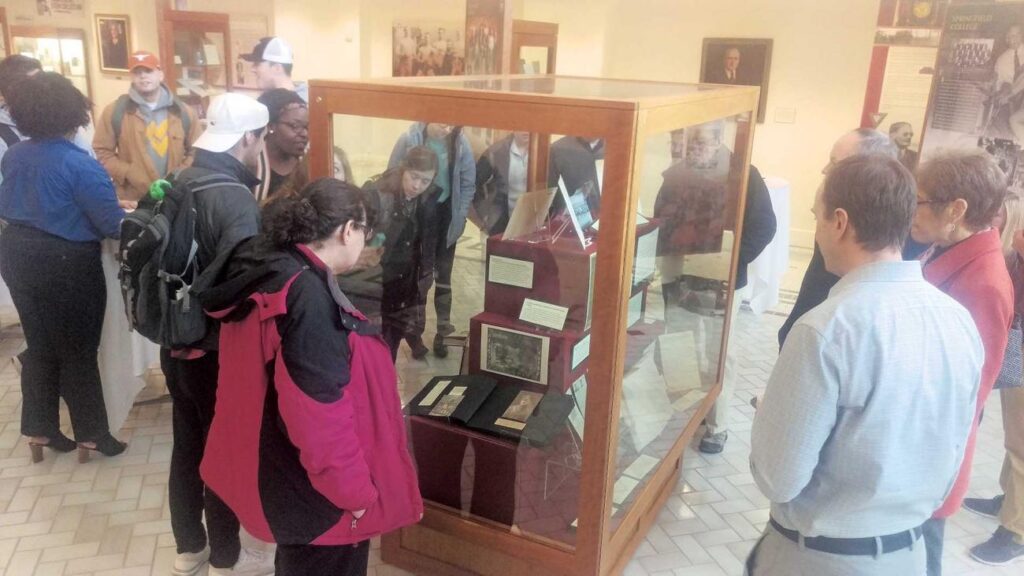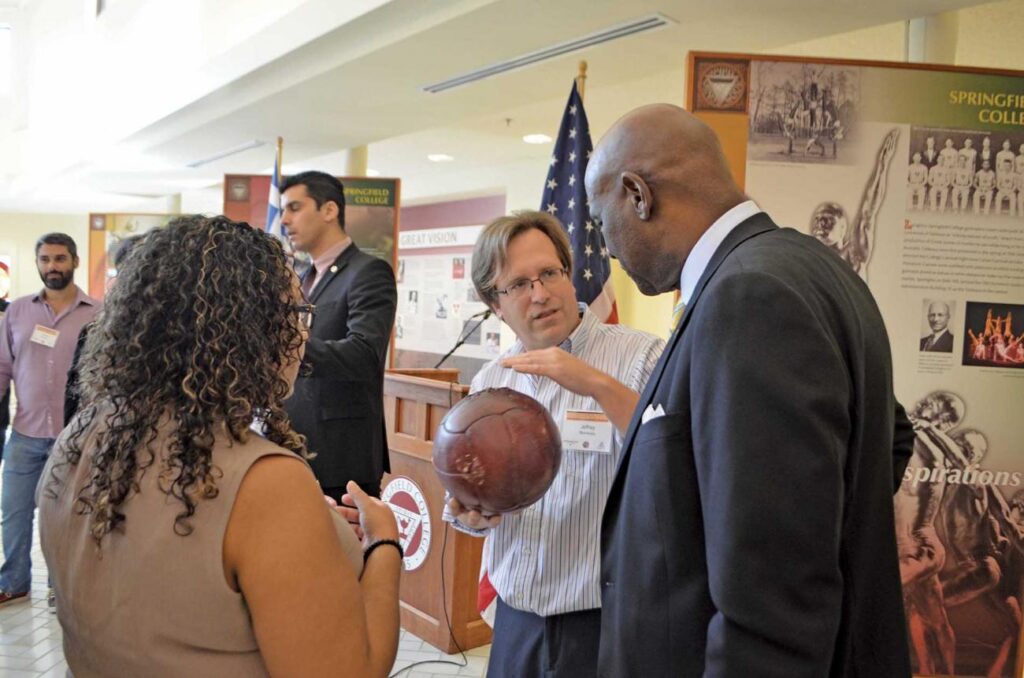Message in a Bottle

Talk about synchronicity. On Tuesday, March 6, major international media outlets ran stories about a record-breaking find in Australia. Tonya Illman of Perth had been walking on the beach when she picked up an old gin bottle filled with sand. When the sand was emptied and dried out, she found a handwritten message in German. No, it wasn’t anything romantic or spiritual; it was merely a request for help on a study of the ocean’s currents. But the date—1886—made it the oldest ever recorded message in a bottle between the time it was written and the time it was found.
“This has been the most remarkable event in my life,” said Illman. “To think this bottle has not been touched for nearly 132 years and is in perfect condition despite the elements, beggars belief. I’m still shaking.”
Just the day before, on March 5 in the museum at Springfield College—an institution one year older than that message in a bottle—students expressed a similar state of wonder.

Members of Professor Ian Delahanty’s Making History Public class were unveiling a new exhibit based on their research about the school’s involvement in World War I. For six weeks, they had pored through the school’s archives and uncovered a trove of old letters, photographs, and scrapbooks from their long-ago predecessors on Alden Street.
“It was a great experience,” gushed Zelarn Bly, a history major from Brooklyn. “I felt that the people of Springfield College past were talking to me now.”
“It’s powerful,” agreed junior Mike Minucci. “These documents that we’re looking at are over 100 years old, and they are so well preserved. You’re holding these papers that are from 1917. You’re reading letters to parents. …You get to see firsthand accounts from people who were, at the time, the same age as myself.”
For Delahanty, a third-year professor whose passion for history flows with every syllable, his students’ enthusiasm for archival work has been particularly gratifying. He and his department chair, Tom Carty, had recently launched a new program focusing on public history and museum studies. He felt confident that such a program could thrive at a school that prizes its past, and that it would be popular even to a generation of young people immersed in the digital age.
“Getting to hold the letters that a soldier wrote to his mother and to a former faculty member, and knowing that that soldier would go on to die in the war has a very different impact on students than it does if you read about it in a textbook,” he said, adding that it provides an “intimate connection to the people you are studying.”
Junior Kathleen Morris is one of the converts. “Usually with history, you tend to focus on the events and battles, but with this class you get an insight on people’s lives, and even more so because these were Springfield College students. You think, ‘That could have been us.’”
Standing off to the side in the museum that Monday afternoon, wearing a shy “proud papa” smile was Jeff Monseau, the College’s archivist. This was his vision come to life.

Monseau is the College’s conduit to the past. Metaphorically, he stands on the shores of Lake Massasoit, fishing out messages in a bottle all the time, and saying, “Hey people, take a look at this!”
In reality, Monseau spends most of his work time in the basement of Judd Gymnasia, our original building, dating to 1894. He oversees a vast amount of material, mostly individual sheets of paper. Put them all together and you get approximately 6,000 linear feet, the equivalent of 19 football fields. More stuff comes in all the time.
Some of it, of course, is junk. Monseau admits that he does reject some of the donations, and he does occasionally throw out material. No, a can of soda someone once drank at Springfield College is not going to be preserved. But generally speaking, Monseau will give careful consideration to anything. He impressed the interview committee when he arrived in 2008 as the only candidate who would seriously address the question of what to do with “Uncle Henry’s old tennis shoes.”
Because once in a while when you pan for gold, you find something glittering in the mud. Sometimes when you reach into an old box that hadn’t been opened in decades—as Monseau did in June 2009—you pluck out a magnetic reel-to-reel tape: the only known copy of Martin Luther King Jr.’s commencement speech at Springfield College in 1964. (It’s now digitized, and anyone with an Internet connection can listen to what some regard as the finest moment in the College’s history.)
**
Springfield College has long been a place that values tradition. Some outsiders are startled to hear that first-year students still wear beanies, or that college students seldom take shortcuts across the grass. For a small school, it has an outsized historical impact: the Birthplace of Basketball®, the ancestral YMCA relationship, the long history of social justice. But for most of the school’s existence, effectively cataloguing that history—and harnessing its lessons for a deeper present and a better future—has been a challenge.
According to Library Director Andrea Taupier, G’02, Springfield’s hodgepodge, hop-scotching attempts at historical preservation over decades received a major boost in 2004 with the hiring of Paige Roberts as the school’s first professionally trained archivist. Roberts, now the archivist at Phillips Andover Academy, spent much of her time at Springfield organizing and sorting the voluminous collections back when they were stored at the Brennan Center. When she left four years later, Springfield conducted a search for the position, and Taupier knew right away she had made her own major historical find in Jeff Monseau. During his interview, his jaw about hit the floor, and Taupier remembers him saying with great animation, “This is like 125 years of a closet!”
In 2010, the archival collections were set to move to their current location, the refurbished Judd Gymnasia. As the building was being prepped for the 21st century, there was a remarkable find. The old stairway in front had to be moved, so workers spent long hours bringing up the grade of the ground. They had to move the cornerstone above the new grade, and as they cleaned the stone so they could repoint it, they found a tightly sealed copper box lurking beneath. It was a time capsule.
Remarkably, it was uncovered almost a century to the day from when Springfield College students and faculty had buried it amid great fanfare in June 1910 (as an article in the student newspaper would prove).
Monseau recalls it as “one of those rare occasions that actually brings archival or historical materials to the light of other people.”
Former College President Richard B. Flynn, H’03, was giddy with the discovery, and directed Monseau and workers to cut open three sides of the box to make sure there were preserved contents inside. When he was assured that was the case, with a flourish captured on film, Flynn then opened the fourth side.
What emerged, Monseau says, were mostly items that were duplicates of things the College already had—books by professors, catalogs, commencement materials, the student newspaper—although there were a couple of original documents. That copper box and some of its contents are now on display in the Springfield College Museum, the dazzling presentation of the school’s past in the former McCurdy Natatorium, adjacent to the archives.
That time capsule set off something of an adult treasure hunt on campus. Sure enough, another sealed copper box was later found beneath the cornerstone of Alumni Hall, this one dating to 1926. This time, it was President Mary-Beth Cooper who did the honors of plucking papers from yesteryear. That box and its contents, mostly what Monseau describes as pamphlets of “how we shaped gentlemen at Springfield College,” is also on display at the museum.
Much as these grand moments are irresistible, Monseau says that every time he opens a package the sense of discovery is the same. “Most everything is sort of like the time capsule,” he says with a matter-of-fact tone belied by the twinkle in his eyes.
Besides, the joy is not really in finding things, he insists; it’s in seeing the excitement that students feel when they catch the fever of living history. Monseau is currently working with a number of students on independent projects drawn from the archives. He doesn’t want to run a shop that merely contains the dusty artifacts of yesteryear for scholars to dip into for esoteric research. Rather, he wants it all to be relevant and important. When he sees the glow on the faces of Ian Delahanty’s students, he can’t keep his own smile away.
Monseau knows there is great wealth in the history of Springfield College, and he is determined to share it.



